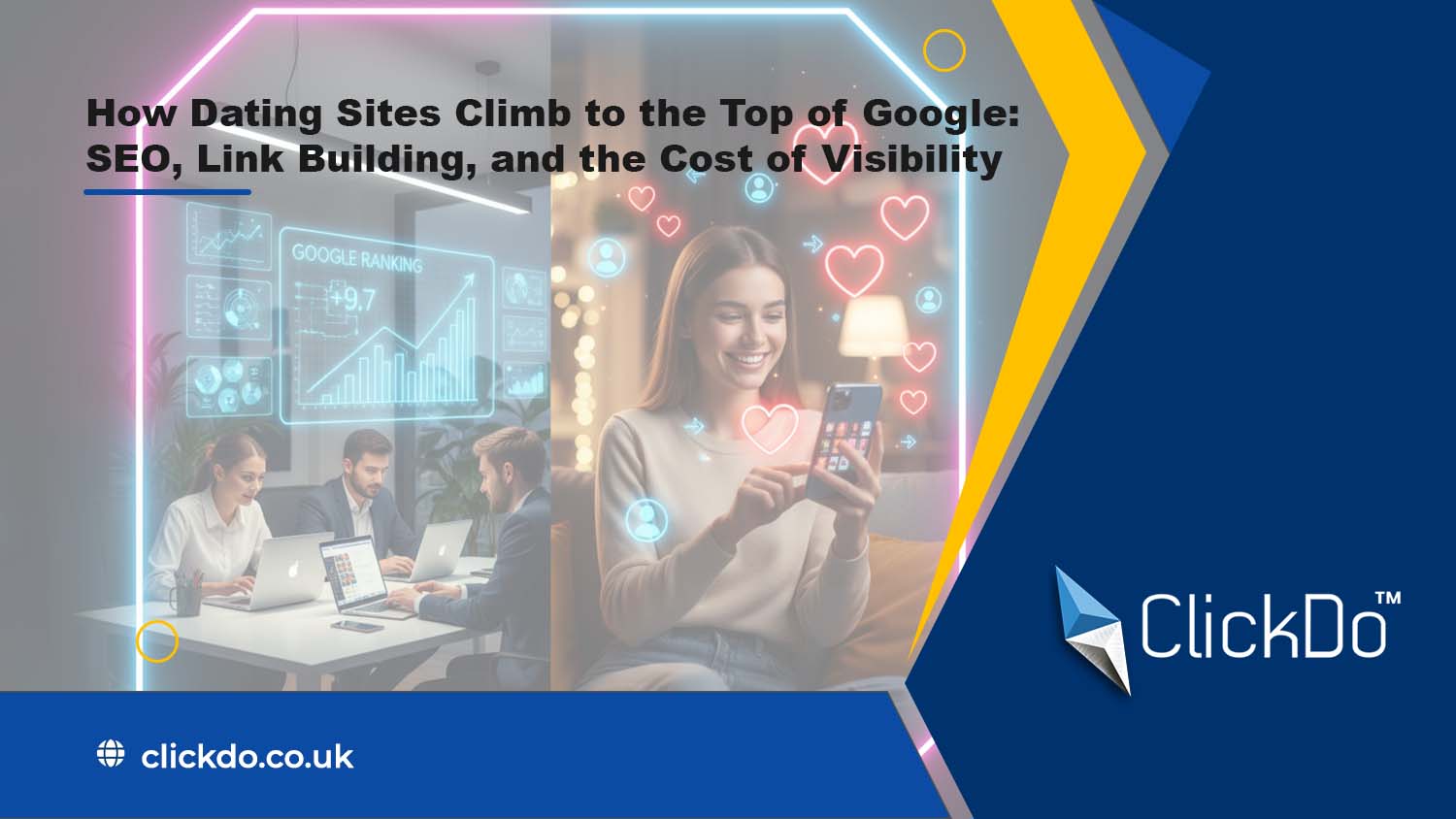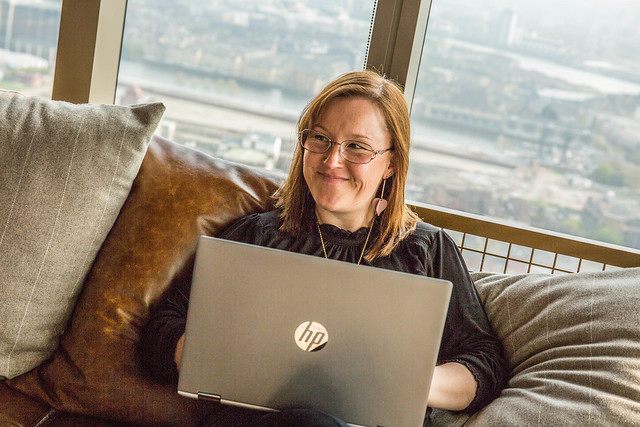
How Dating Sites Climb to the Top of Google: SEO, Link Building, and the Cost of Visibility
Popular dating sites like Tinder, Bumble, Match, OkCupid or niche services like Christian Mingle or Elite Singles — they all seem to magically float to the top in Google searches.
But there’s no magic here. Behind those search results lies an intense battle of SEO, content, and link building. Dating is one of the most competitive online industries, and sites spend serious money to make sure you see their name before anyone else’s.
So, how do dating sites actually rank so high on Google? And how much are they spending to fight for that digital spotlight? Let’s break it down.
Why Dating Is One of the Toughest SEO Niches

Think about it: dating affects almost everyone at some point in their lives. That means the audience is massive and millions search for terms like “dating sites free”, for example. But a massive audience = massive competition.
- Global demand: Millions search for dating-related keywords every day.
- Big money: The dating industry generates billions annually, so companies are willing to invest heavily in marketing.
- High user turnover: People who find partners eventually leave, so platforms constantly need new users.
- Low brand loyalty: Most users try multiple apps at once, which means each platform is battling for attention every single day.
In short, ranking on Google isn’t just nice for dating sites — it’s survival.
How Dating Sites Win on Google

1. Content Marketing
The first rule of SEO: Google rewards fresh, relevant content. Dating sites don’t just run their apps; they build entire content hubs.
- Blogs with advice: Articles like “10 First Date Questions That Work Every Time” or “Best Icebreakers for Online Dating” attract readers and potential users.
- Guides and glossaries: Explaining terms like “ghosting,” “breadcrumbing,” or “situationship” helps capture trending searches.
- Data-driven posts: Reports like “How Many Couples Meet Online in 2025?” earn links from journalists.
The goal? To catch users before they sign up — when they’re Googling dating advice or statistics.
2. Link Building
Backlinks are the backbone of SEO. The more quality websites link to you, the higher Google ranks your site. Dating companies invest heavily here:
- Guest posts: Partnering with lifestyle, tech, or relationship blogs to publish dating-related articles with backlinks.
- Press coverage: Getting featured in mainstream media (“The top 5 dating apps of the year”) builds authority.
- Affiliate marketing: Many dating sites pay affiliates to review or recommend them, generating both traffic and backlinks.
- Scholarships or sponsorships: Offering niche scholarships or sponsoring events just to earn links from universities or trusted organisations.
Some big players even acquire smaller blogs to use them as permanent link sources.
3. Technical SEO
Dating sites are complex, with profiles, messaging systems, and apps. To rank, they must:
- Load fast on mobile (Google punishes slow sites).
- Use secure HTTPS for user trust.
- Create a clean site architecture so Google can crawl efficiently.
- Localise for multiple languages (dating is global).
Even small technical glitches can sink rankings, so big dating platforms employ entire SEO teams to monitor performance.
4. Paid SEO Boosts
Though not “pure” SEO, paid ads complement organic rankings. You’ll often see Google Ads for dating apps above organic results. This strategy is expensive — some competitive keywords cost $5–15 per click — but it ensures visibility.
How Much Do Dating Sites Spend on SEO?

Exact budgets vary, but dating is a high-spend industry investing big in marketing.
- Content creation: A steady blog can cost $10,000–$50,000 per month for writers, editors, and SEO strategists.
- Link building: Quality backlinks can cost anywhere from $100 to $1,000+ each. Large sites may invest $20,000–$100,000 per month on link acquisition alone.
- Technical SEO: In-house developers, UX designers, and SEO specialists easily add another $10,000+ monthly in costs.
- Paid ads: Some platforms spend millions annually just to dominate the top sponsored spots.
Industry insiders estimate that major dating brands spend between $500,000 and $2 million per year on SEO and link-building alone. Smaller niche sites might spend $50,000–$200,000 — still a huge investment.
A Realistic Example
Imagine a mid-sized dating site launching in the U.S.:
- Content marketing: 20 SEO-optimised blog posts per month → $15,000.
- Link building: 50–100 quality backlinks → $25,000.
- Technical SEO team: $10,000.
- Paid ads supplement: $50,000.
That’s $100,000 a month just to compete. Without it, they’d vanish in Google’s sea of competitors.
Why the First Page Matters So Much

Studies show that 75% of users never go past the first page of Google. In the dating world, that means if your site isn’t there, you’re invisible.
For example:
- The keyword “best dating site” gets tens of thousands of searches monthly. Being #1 or #2 for that term can bring in thousands of new signups daily.
- Even niche terms like “Christian dating app” or “dating sites for over 40” are worth gold. Ranking for 50–100 niche terms can keep a site profitable even if they can’t beat Tinder or Bumble for general searches.
This explains why dating companies pour resources into SEO — every new user is potential lifetime revenue.
How Competitive Is the Niche?
The dating SEO niche is brutally competitive for three reasons:
- Global players: Tinder, Bumble, Match Group, and niche giants all spend millions.
- Low switching costs: Users can easily try multiple apps, so each company fights harder for visibility.
- Affiliate armies: Thousands of blogs, review sites, and influencers promote dating apps, making organic rankings harder for newcomers.
For a new dating site, climbing to page one without a big budget is almost impossible. The competition isn’t just tough — it’s cutthroat.
The Future of SEO for Dating Sites

As technology shifts, so does strategy. Expect to see:
- More AI-driven content. Faster production of blog posts and guides.
- Interactive tools. Quizzes like “Which dating app fits you best?” attract links and shares.
- Video SEO. Explainers and dating tips on YouTube are optimised for search.
- Voice search. Optimising for questions like “What’s the best dating app near me?”
Dating sites that adapt to these trends will stay ahead, while others fade.
When you see a dating site on the first page of Google, know this: it didn’t just happen. It’s the result of careful SEO, aggressive link-building, huge budgets, and nonstop competition.
Love may be free, but ranking for love-related keywords is one of the most expensive games on the internet. And in a niche where millions of new users are up for grabs every month, dating sites will keep fighting tooth and nail to stay visible.
Because in online dating, just like in love, if you’re not seen — you don’t stand a chance.
Author Profile
- As the Chief of Marketing at the digital marketing agency ClickDo Ltd I blog regularly about technology, education, lifestyle, business and many more topics.
Latest entries
 Digital MarketingOctober 24, 2025The State of AI and Digital Marketing in 2025: A Brief Analysis
Digital MarketingOctober 24, 2025The State of AI and Digital Marketing in 2025: A Brief Analysis Digital MarketingOctober 1, 2025How Dating Sites Climb to the Top of Google: SEO, Link Building, and the Cost of Visibility
Digital MarketingOctober 1, 2025How Dating Sites Climb to the Top of Google: SEO, Link Building, and the Cost of Visibility Digital MarketingSeptember 24, 2025Global vs Local SEO Strategies for UK Companies
Digital MarketingSeptember 24, 2025Global vs Local SEO Strategies for UK Companies Digital MarketingSeptember 23, 2025High-Competition Niches: SEO Tactics That Cut Through the Noise
Digital MarketingSeptember 23, 2025High-Competition Niches: SEO Tactics That Cut Through the Noise

